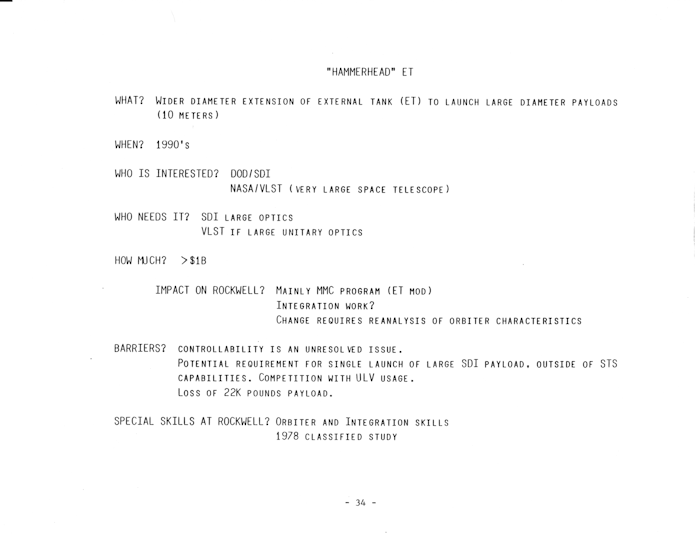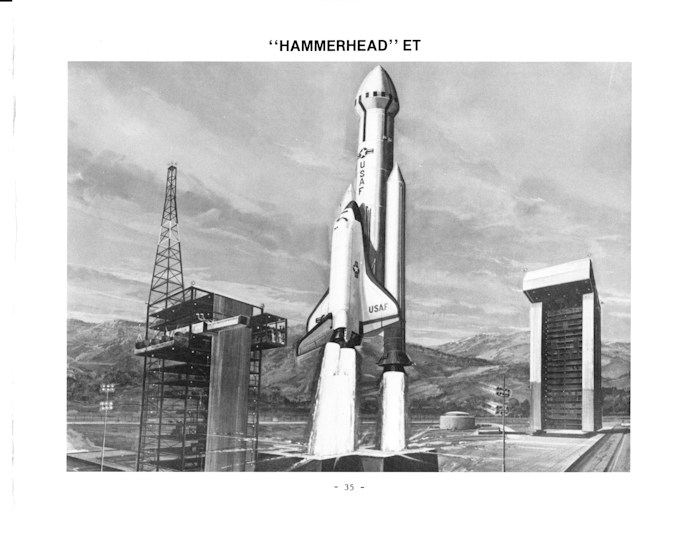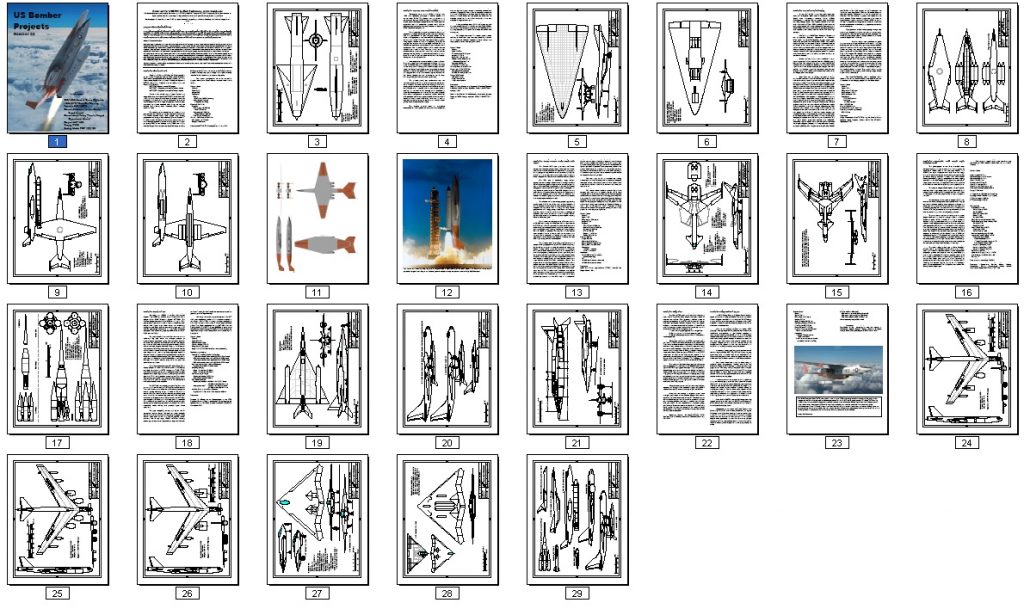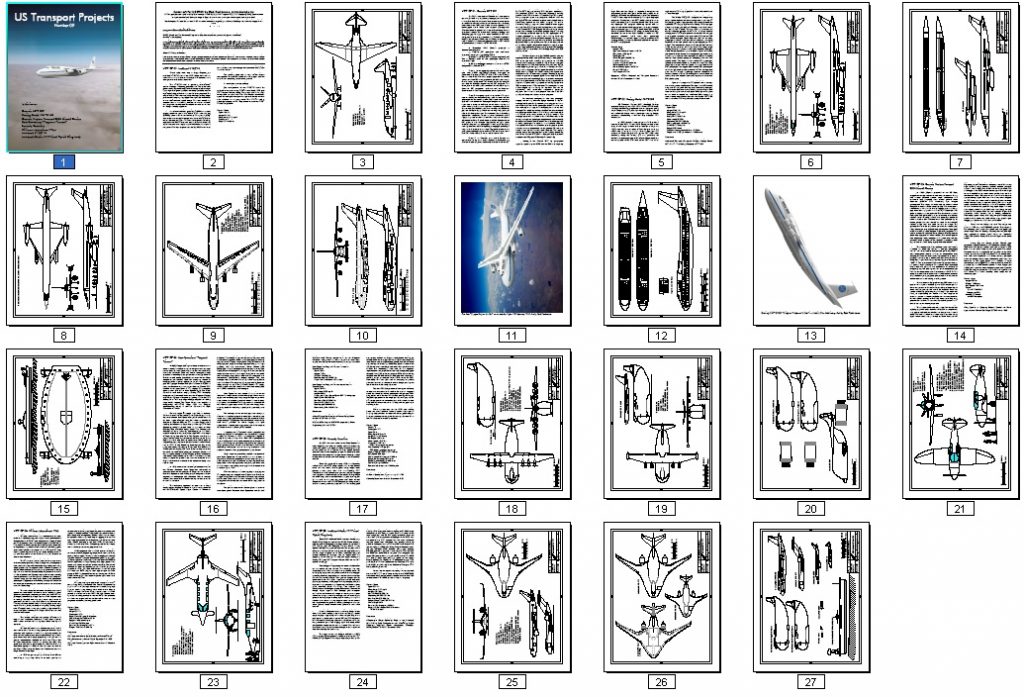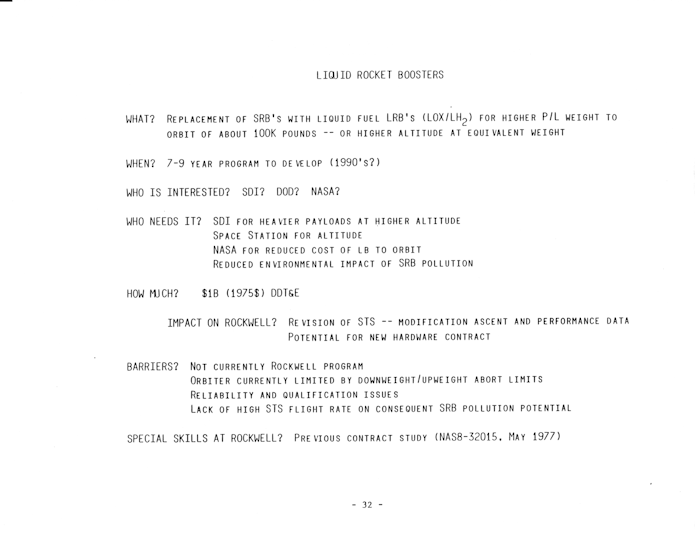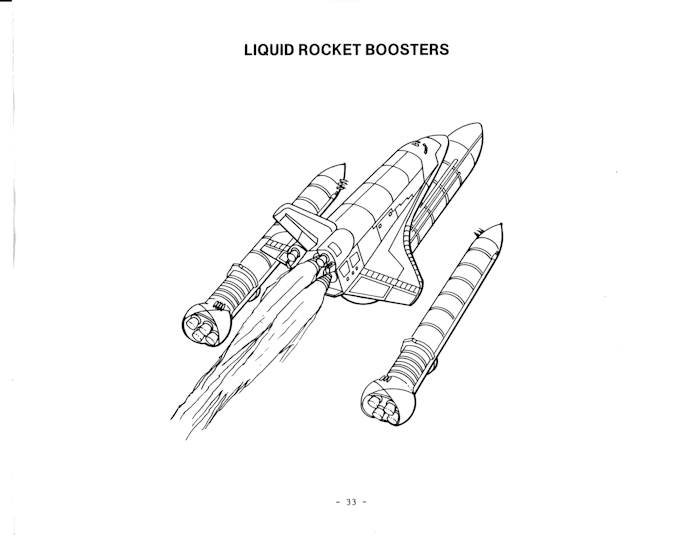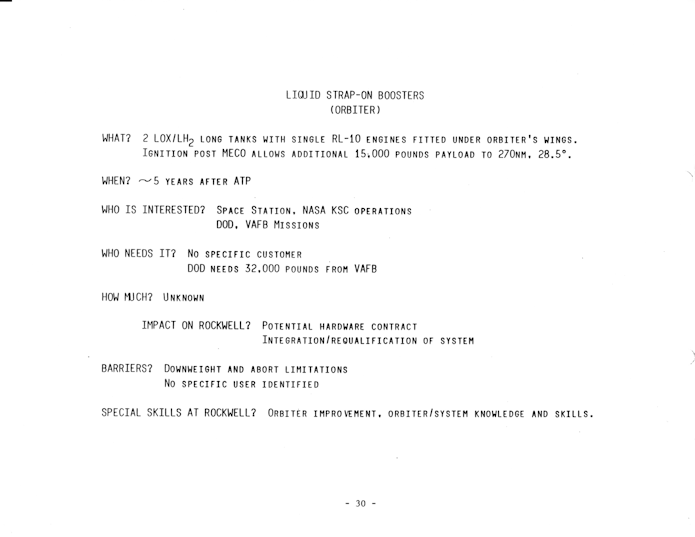In 1985, just as Rockwell thought that a case might be made for an Aft Cargo Carrier for larger-diameter payload to fit behind the Shuttle External tank, there were those who believed that a case could be made for a *forward* cargo carrier for even bigger-diameter payloads. This “hammerhead” payload shroud would be much more conventional than the ACC and would not need to deal with the thermal issues of getting baked by the SSME and RSRM exhausts. it would have to withstand aerodynamic forces, but those are much better characterized.
An advantage of the “hammerhead” was that it allowed quite sizable payloads, but at a substantial mass penalty. Details from other sources are sparse on exactly *what* payload, but one item illustrated is a space-based laser with a very large primary mirror. A NASA mission would be for a “very large space telescope,” a follow-on to Hubble with a much larger mirror. Pretty much what became the Webb.
This very concept was described further and illustrated with diagrams in US Launch Vehicle Projects #01. Why not pick up a copy?
